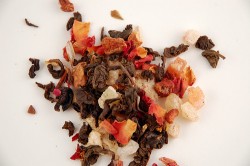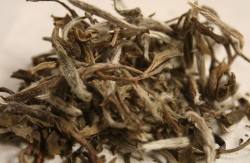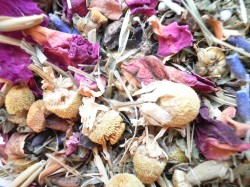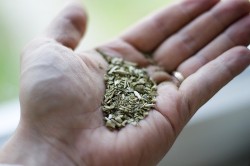I gave up coffee about seven years ago, after I traveled throughout Italy and tasted (by far) the best made cappuccinos and espressos known to woman.
The aroma, the flavor, the simplicity of each small cup, perfect froth, and conversation at counters with random strangers made each and every coffee tasting more meaningful. After returning to America and back to the ritual of my breve latte purchased daily at local coffee hangouts (two shots espresso with a smidge of thick half-and-half), I realized that the perfect cup of that morning jolt was not anywhere near like the Italian version, but my wallet was taking a major hit when the prices rose every year for my simple addiction.
Green tea was the afternoon delight and accompanied my random dark chocolate choices throughout each day and passing year. Knowing that I wasn’t relying on the 300mg. of coffee caffeine to get me started each day, I began to acknowledge that green tea was better for my overall health, it offered a smoother start to the morning, and I saved an armful by brewing my own at home.
One of those little pleasures that might often go unrecognized was to opt for tea over coffee. In doing so, my monthly income wasn’t compromised by needing to visit every local coffee joint in town, whether eclectic or not, and my mood seemed more on an even keel.
The tea-drinking ritual also was more in alignment with my meditation, yoga, and love of nature.
I lost all reasons to rush out the door due to the caffeine high I was experiencing on the breve lattes, or the need to meet up first thing with super conversationalists, when I would have rather been quiet and still with a hot cup of tea.
These simple steps took me a while to adopt, yet knowing my health is priority with my own history of family breast cancer, I gave up coffee for good and decided tea was the best choice in discovering more about my inner and outer desires.
Tea is more complex than people think. Learning more about the different types of tea and their benefits widened my scope on flavors, scents, where the leaves originate, and what foods to possibly pair with each tea decision.
If you find yourself in contemplation over tea versus coffee, you might want to consider these tea options and their benefits:
1. Green tea—by far the most popular tea sipped across the world. Study after study of green tea and its antioxidant benefits show it aids in everything from reducing fibrocystic nodes to weight loss to digestive problems, proving that green teas have the most diverse and abundant leaves for health. Each aroma is different—some mild, others very strong—yet the overall complexity of green tea can be scented with flowers or mixed with fruits to produce the influence of the low caffeine stimulation and anti-cancer properties.
2. Oolong teas—this strong black tea was actually revered by Buddhist monks who trained monkeys to harvest the leaves from the tops of wild tea trees, where it became a cultural staple in all of Asia. The loose form has the most caffeine content with the highest possible grade having an orchid-like aroma and smooth finish. Sometimes referred to as “Black Dragon “ tea, the oolong leaves are potent and can aid in the reduction of cholesterol levels, formation of strong bones, preservation of heart health, and strengthening the immune system.
3. White teas—while green and black teas are the most popular, white teas are less processed and are the purest of all teas. They possess the highest antioxidant properties of any tea, and its supreme power is in preventing disease and disorder. Everything from radiant skin, strong bones, heart disease, cholesterol-lowering, and a host of numerous healthy benefits, the white tea family is one of nature’s greatest gifts.
4. Herbal teas—caffeine-free and laden with infection-fighting characteristics, herbal teas help with nausea, colds, indigestion, combating the first signs of infection, sleep disorders and many other therapeutic virtues. The range of herbal teas is vast, as is the benefits of each one. Ginger, nettle, chamomile, thyme, jasmine light green, cinnamon, peppermint and even St. John’s Wort, these are simply a few of the amazing tea options. Avoid the synthetic herb teas and go for the organic varieties, as these contain a better quality leaf. Drunk a few times per day, herbal teas without artificial flavorings are the perfect remedy for creating a healthy internal environment.
5. Mate teas—coffee lovers rejoice! Mate teas are made from the leaves and twigs of the yerba mate plant, and it is the one tea that tastes just like coffee. It is favorably compared to green tea in its benefits, yet it has five times the antioxidant qualities that green tea does. Mate tea can help you think more clearly, alleviate bad breath, and help with an upset stomach, to name a few. South American and European countries have long understood the benefits of mate tea, and America is now catching up. Overdoing it though can result in too much of that “coffee high feeling” which can work against you in over-stimulation and make you feel a bit jittery. A good cup of mate however can help with allergies, increased metabolism, and digestive disorders.
Within each category of the teas above there are oodles of types and stimulating flavors to explore and taste.
If you were to visit a tea leaf shop and browse the shelves of the many varieties, no doubt you might experience that similar feeling that visiting a book store provides—lots of new virgin smells, so many genres, catchy titles, interesting origins and alluring outer covers.
And don’t forget the amazing benefits that each leaf provides to enrich your life; a ritual indeed.
Love elephant and want to go steady?
Sign up for our (curated) daily and weekly newsletters!
Editor: Catherine Monkman
Photos: Jito Ray/Pixoto, Steve Snodgrass/Flickr, elephant archives, Akuppa/Flickr, www.maitse.tv/Flickr, bkajino/Flickr








Read 32 comments and reply